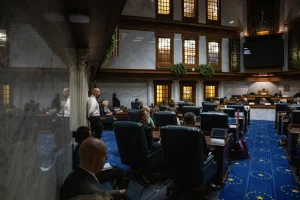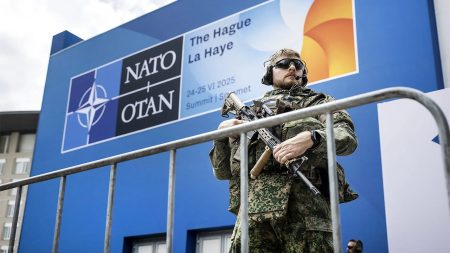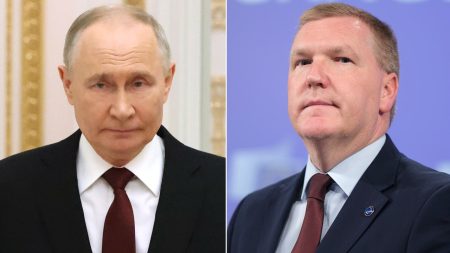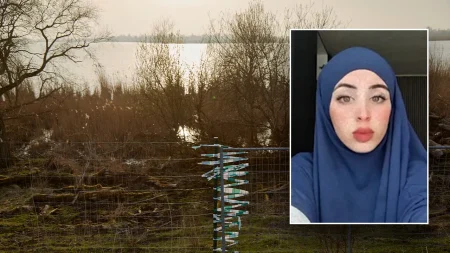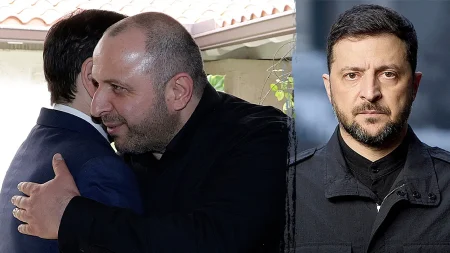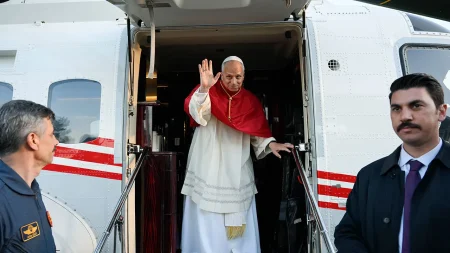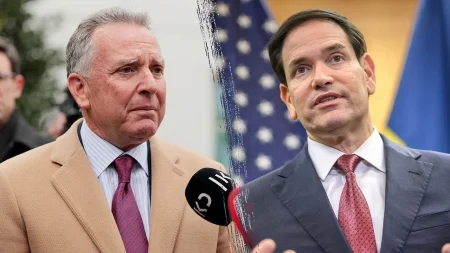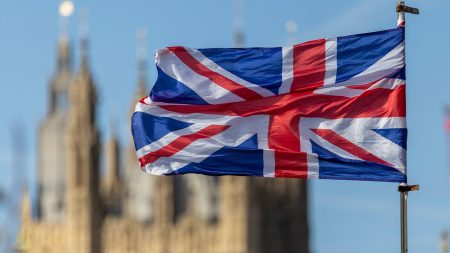NATO’s Rising Tensions with Russia: A Path to Inevitable Conflict?
In the shadow of Russia’s invasion of Ukraine, which began more than three and a half years ago, NATO has maintained a state of high alert. However, recent escalations—particularly a spike in alliance airspace violations—have security experts increasingly concerned that warnings of war with Moscow are shifting from theoretical possibilities to probable realities. This mounting tension was highlighted by former President Donald Trump’s recent statement that the U.S. could “end up in World War III” over Russia’s war in Ukraine, expressing disappointment that Russian President Vladimir Putin has “let him down” by refusing to end the military campaign. The gravity of the situation intensified when, just one day after Trump’s comments, Russia sent three fighter jets over Estonia’s capital city of Tallinn, prompting another NATO member to invoke Article 4 for the second time in as many weeks.
Lithuanian Defense Minister Dovile Sakaliene offered a stark assessment of the situation, describing these incidents as “deliberate provocations” designed to test NATO’s readiness, resolve, and the limits of its deterrence. “Russia is testing NATO again—dozens of drones in Poland last week, drones in Lithuania, Latvia, Estonia, and now fighter jets in Estonian skies,” she explained. Sakaliene emphasized that these violations represent part of “an escalating pattern of pressure by Russia” that constitutes “a direct threat—not just to territorial integrity, but to citizen safety” for Estonia, Poland, Lithuania, and all NATO members along the eastern flank. According to Sakaliene, NATO’s strongest defense currently lies not only in military preparedness but in presenting a united front to discourage Moscow from taking direct action against a NATO member—an action that could potentially trigger a global conflict. “Our biggest risk currently is miscalculation by Russia,” she warned, questioning whether Russia believes NATO will defend its territory and whether Europe would strike back alongside the United States.
The threat of direct NATO conflict with Moscow escalated earlier this month when a swarm of at least 19 Russian drones not only violated Polish airspace but necessitated a multi-nation response. For the first time since the war began, NATO forces fired upon Russian assets, bringing down as many as four drones deemed threatening. While Trump suggested this drone incursion might have been accidental, Poland firmly rejected this notion, labeling it a “deliberate” and “planned provocation.” These drone strikes represent a favored Russian tactic in its campaign against Ukraine, with deployment numbers reaching a peak of 6,297 long-range drones in July before dipping slightly to 4,216 in August. Notably, the majority of August’s drone deployments—3,001—occurred after August 16, following Trump’s meeting with Putin in Alaska on August 15. The situation further deteriorated when an American company located less than 30 miles from NATO members Hungary and Slovakia was hit by “several” cruise missiles in late August, underscoring the expanding scope of Russian aggression.
Russia has increasingly embraced “gray-zone” tactics—actions that fall below the threshold of open warfare while still allowing Moscow to test NATO’s resolve and response capabilities. Over the past month, Poland experienced three separate airspace violations by Russian drones, including UAVs carrying explosive components that entered from both Ukraine and Belarus. Just three days after a drone swarm overwhelmed Polish air defenses, another Russian drone penetrated Romanian airspace, prompting a response from a French fighter jet and a Polish helicopter under NATO’s recently launched Operation Eastern Sentry. These incidents followed earlier violations of Lithuanian airspace in late July, including one drone carrying explosives. Beyond these physical incursions, security experts have identified concerning rhetorical patterns from Russian officials that mirror language used before the invasion of Ukraine. Former Russian president and current Security Council chair Dmitry Medvedev recently published an op-ed accusing Finland of being “Russophobic” and claiming Helsinki joined NATO as a “guise” for defense while secretly preparing for war against Russia—allegations that align with broader Kremlin narratives targeting NATO’s newest member.
The verbal threats extend beyond Medvedev’s comments, with multiple Kremlin officials, including Putin himself, warning that “there will be problems” following Finland’s NATO membership and claiming the alliance plans to use Finland as a “springboard” for attacking Russia. George Barros, Senior Russia Analyst with the Institute for the Study of War, provided a sobering assessment: “Russia has been steadily setting conditions to attack NATO over the past several years: Moscow is standing up new divisions and optimizing its command and control headquarters on NATO’s eastern flank. The Kremlin information warfare apparatus is fabricating claims and justifications for why Finland, the Baltic States, and Poland are not real countries.” These efforts, Barros warned, represent “the prerequisite preparations for future war that Moscow is preparing.”
Defense Minister Sakaliene reinforced these concerns while highlighting Russia’s effective use of “soft power” through social and traditional media to influence public perception. “We see a picture of a very aggressive country which is investing a disproportionate amount of its funds into their military capacity,” she observed. Despite sustaining heavy losses in Ukraine, Russia continues to advance while simultaneously expanding its military capabilities—a strategic choice that raises significant questions about Moscow’s ultimate intentions. “Despite heavy losses every week, every month, they are moving forward in Ukraine, and at the same time, they are expanding their capabilities,” Sakaliene noted. “It raises considerable doubts if all that mass of military power is being accumulated only for Ukraine.” As NATO grapples with these escalating provocations, the alliance finds itself at a critical juncture where its unity, resolve, and strategic response capabilities may determine whether these tensions evolve into outright conflict or whether deterrence can prevent a wider European war.


